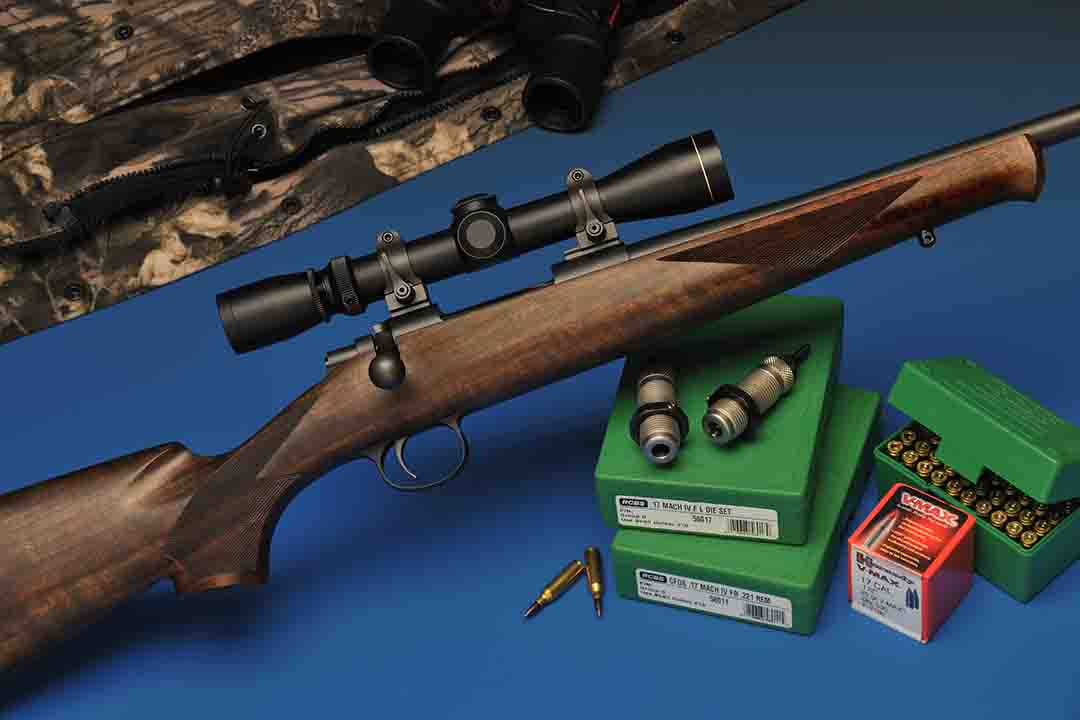
The Cooper Model 21 chambered in the .17 MARK IV. Stocked in AA Claro Walnut and equipped with a Leupold 3-9x 32mm scope, this rifle is perfect as a walking varmint rifle for woodchucks and other small game.
When it comes to firearms or its related products, I enjoy dwelling on the history of the subject especially if it goes back more than a century. When working on reference material concerning .17-caliber rifles and cartridges for example, I came upon something interesting. Apparently, the idea of a “sub-caliber” dates back to the beginning of the nineteenth-century in the shop of a Swiss gunsmith by the name of Fiobert. Living in France, he came up with a small rimfire cartridge in 6mm, then downsized it to around 4mm (.172 inch), that at the time was popular with indoor or parlor shooters.
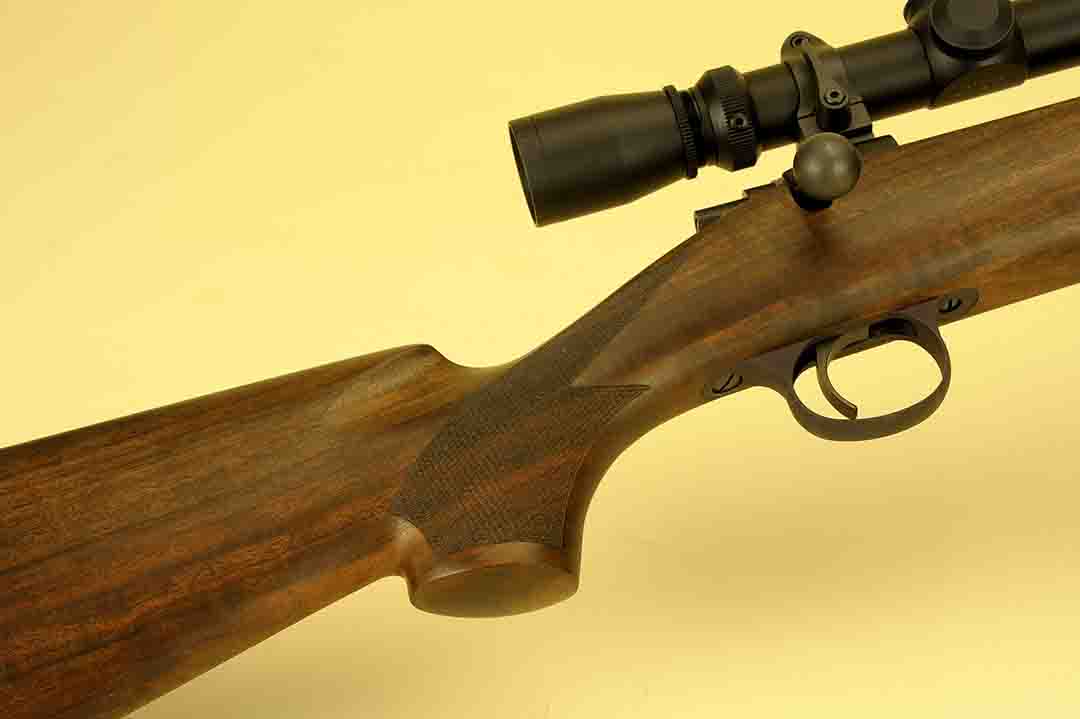
There is more than enough of a checkering pattern on the pistol grip done as a traditional point pattern. There is no pistol grip gap, so beware of chipping this part of the gun for those prone shooters who love to lay in the alfalfa during varmint season.
It seems enthusiasts in the U.S. got a hold of the idea in the 1920s and adapted it as the 5.5 Velo Dog case. Some 20 years later, Charles O’Neil of O.K.H rifles started to play around with it. Later, P.O. Ackley came up with the .17 PeeWee, but it was not until more modern times in the 1960s when wildcats combined with current powders started to bloom. Out of all this, the .17 Mach IV was created in 1962 by Vern O’ Brien in Las Vegas, Nevada, a company specializing in high-quality “custom-production” rifles. Using the recently introduced .221 Remington Fireball case as his base, he opened up the shoulder from the host 23 degrees to 30 degrees and necked it down to .172 caliber while keeping the same overall case dimensions. O’Brien sold his company to Harrington & Richardson and they developed the .17-223, which later became the .17 Remington. The cartridge did catch on for a while and was offered by Cooper Arms of Montana as the Model 21; before that, Kimber of Oregon as its Custom Classic.
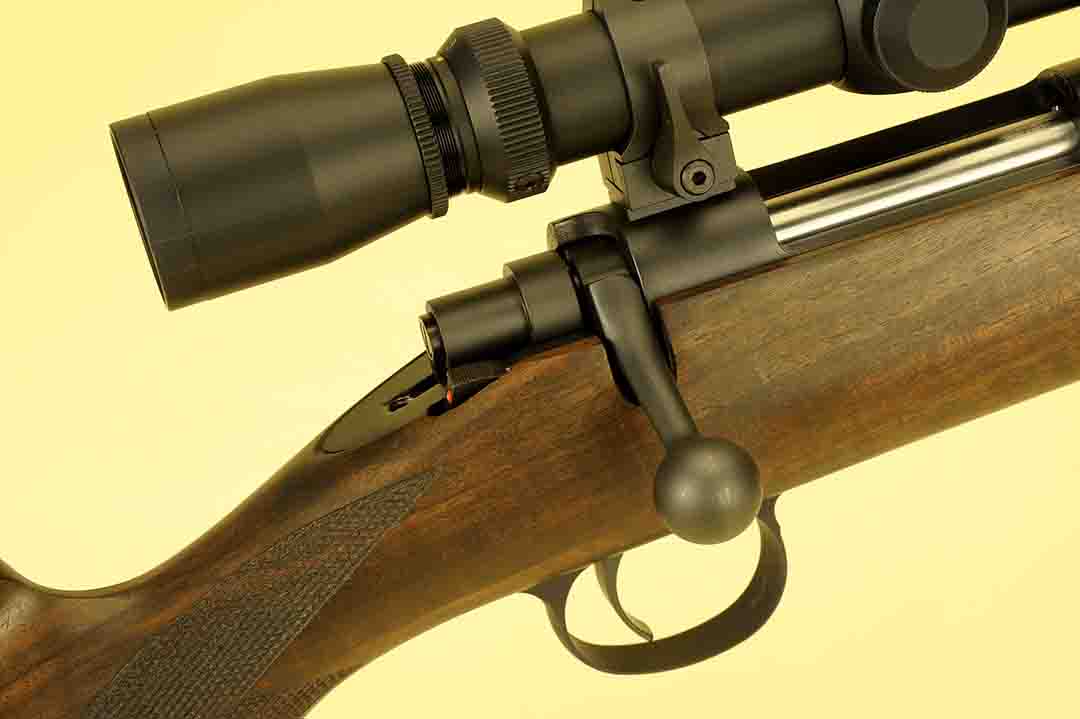
Closer in, the safety is visible just behind the bolt handle. On the Cooper gun, it is two position; forward to fire, back for safe. Detailing on both the wood and metal is first-rate as it should be on a gun of this pedigree.
My involvement with this .17 caliber began more than 20 years, again with the President of Cooper Arms, Dan Cooper. I believe the relationship started with an ad in one of the gun magazines, showing a pair of rifles, one being the svelte-looking Model 21 bolt-action rifle, the other a Model 38. Looking at that gun made me think this just has to be the gun for this diminutive .17-caliber cartridge I was interested in for range testing and handloading. Knowing Dan, he was in tune with varmint shooters, and with the availability of cartridges like the .223 Ackley, .22 PPC or the .17 Javalina, to varmint shooters in the East where the distances are short and the woodchucks close, a gun like this would be the proper tool for any summer outing. I was hooked!
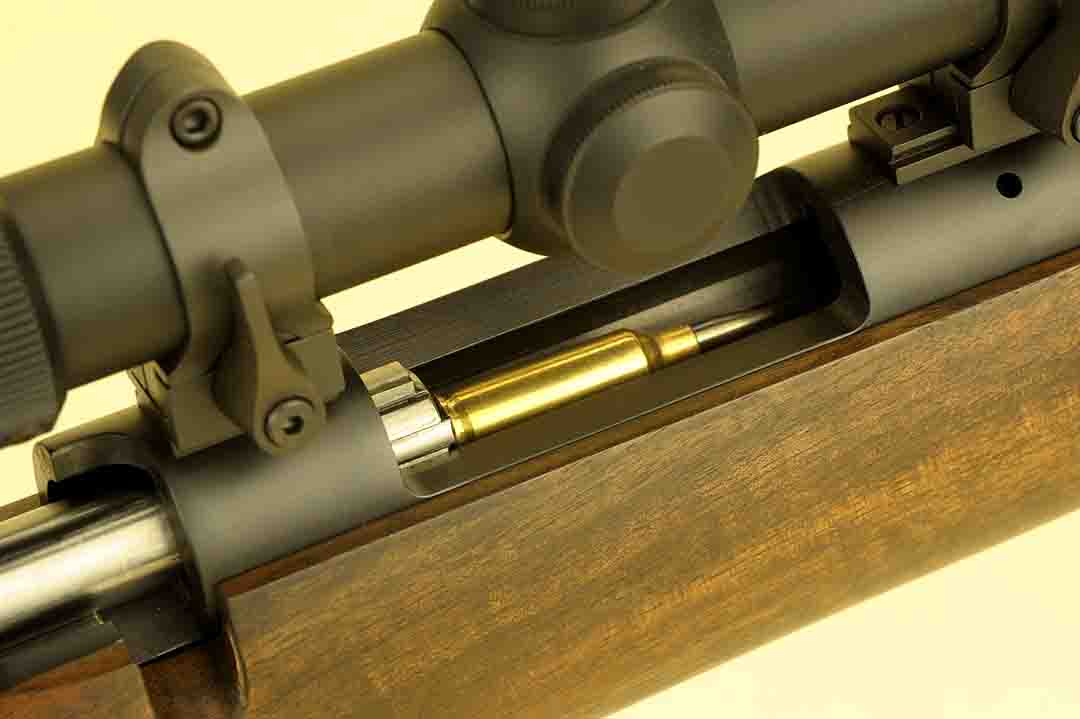
For the hunter who loves a single-shot rifle, this is the one! With no floorplate to mar the underside of the gun, the stock can be made slimmer and lighter for field use while also adding a one-shot challenge to any hunt.
The lines are trim, the gun checks in around 5.5 pounds and with a Leupold 3-9x 32mm scope attached. To me, this is the perfect “walking” varmint rifle. Cooper rifles always did everything right, and the stock is choice walnut in a satin finish with enough transparency to bring out the color, grain and figure of the AA Claro walnut. The lines are straight as a true classic gun should be with a level comb and no cheekpiece to mar the lines.
At the muzzle end, there is a European-type of Schnabel treatment. From there, a sling swivel stud and a point checkering pattern is followed by a gradual taper towards the trigger guard and pistol grip. Since this is a single-shot rifle, there is no magazine or floorplate to mar the lines. The pistol grip has more than its share of finely-cut checkering, again in a traditional point pattern. There is no pistol-grip cap, so prone shooters beware. The buttstock is full, another sling swivel stud follows to a Pachmayr presentation pad with a black spacer. Inletting is as perfect as it can be, all finished off with a trigger pull a tick under 3 pounds with the safety lever conveniently located behind the bolt handle.
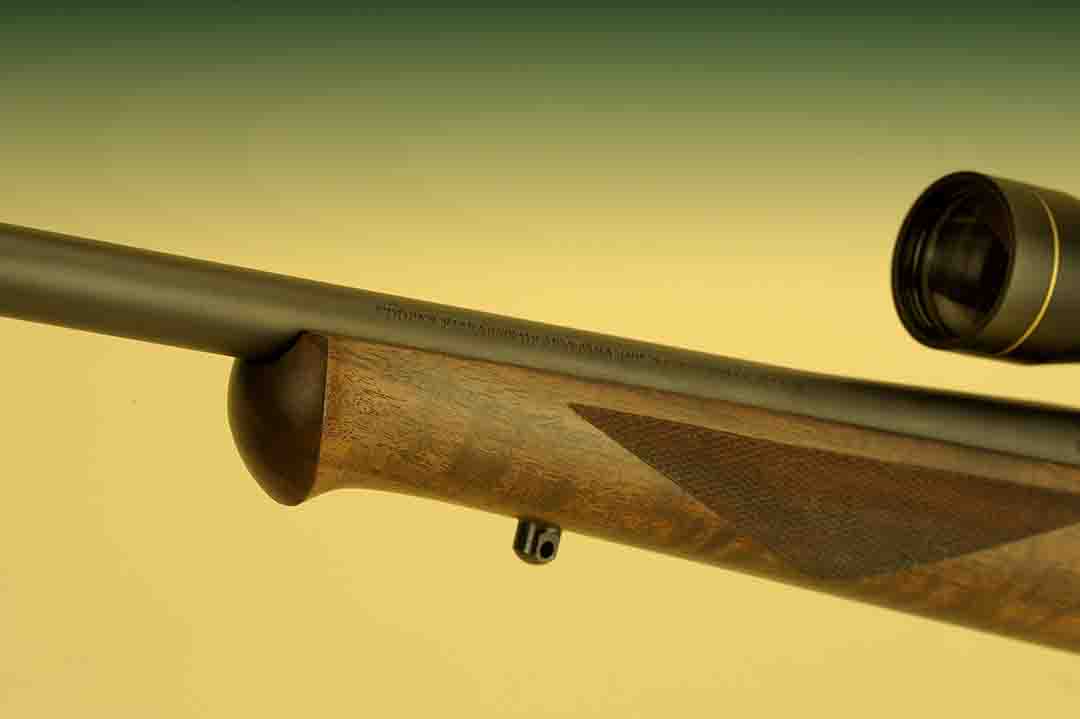
Adding to a European flavor, the forearm of the Cooper has a Schnabel tip. The barrel, like the rest of the action, is finished to a satin blue while being free floated within the stock.
Like all Cooper rifles, the bolt has three, full locking lugs with a plunger-type of ejector, a blade extractor all encased within the bolt face. The bolt body is a full diameter from front to back with no Mauser-type of ejector to mar the lines or the operation and it is polished and left in the white. The bolt handle sits straight out and the bolt knob seems a bit oversized for this gun, but that’s okay for field use. Barrels on this model are 20 inches long, target crowned, are hand lapped and match grade, no sights, but the gun was equipped with Warne bases to which the scope was mounted with a set of Leupold detachable low rings.
While the .17 Mach IV is not as much of a household word as it was in years past, and while Cooper does not chamber the gun anymore for this cartridge, checking the secondary market, I found over a half dozen guns still for sale in a couple of models. Seems the .17 Remington Fireball has taken over, but for those looking for bragging rights at the range, the .17 Mach IV is fun to work with and handload. Dies, powders and bullets are out there and for shooting, any .17-caliber gun is a great choice for varmints.
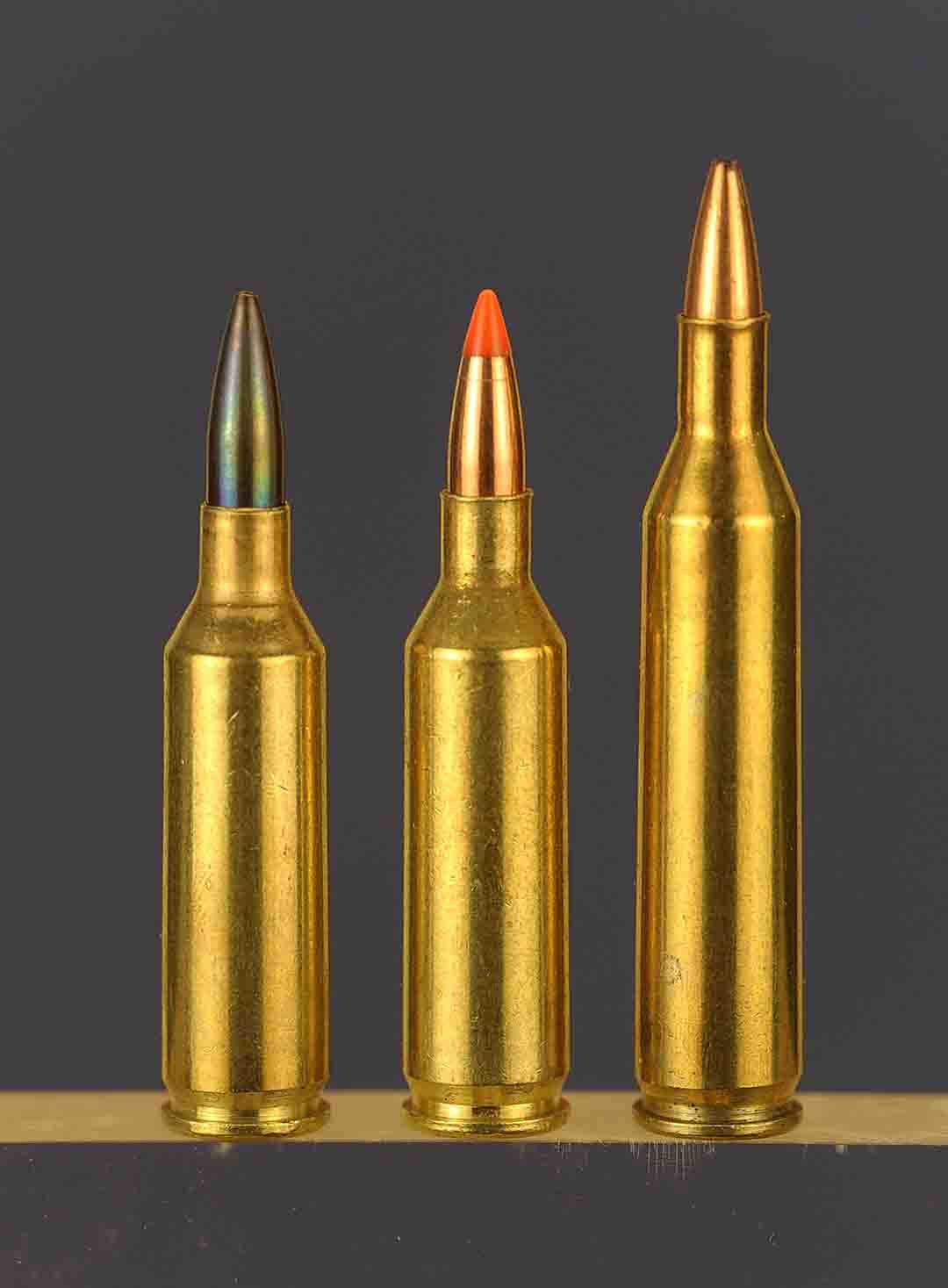
Some of the more popular seventeens out there now. From left to right, we have the .17 MACH IV, the newer .17 Remington Fireball and the original .17 Remington.
To start out, RCBS has discontinued its case-forming die sets for .17 MACH IV but in checking around, they still can be purchased online. Looking in the Redding catalog, they have a few variations including the popular Bushing line that has nine model numbers from full sets to match components starting at number 77504 for a reference. The Series D is for obsolete or wildcats and they start at number 80504. When it comes to brass, if handloaders are using the .221 Fireball cases, they will need the RCBS case-forming set that includes a forming die and trim die all set in the press on an extended head. In today’s shortage of everything, if a handloader can find .17 Remington Fireball brass, just run it through the .17 MACH IV full-length sizing die and you are all set to go.
When sizing a small case like the MACH, too much lube can collapse the shoulder area of the case especially when neck sizing. I found that the best way is to place a bit of lube between two fingers, go around the neck and size after. Priming is with any good primer and for the most in accuracy; I tend to go with the “benchrest” type of product.
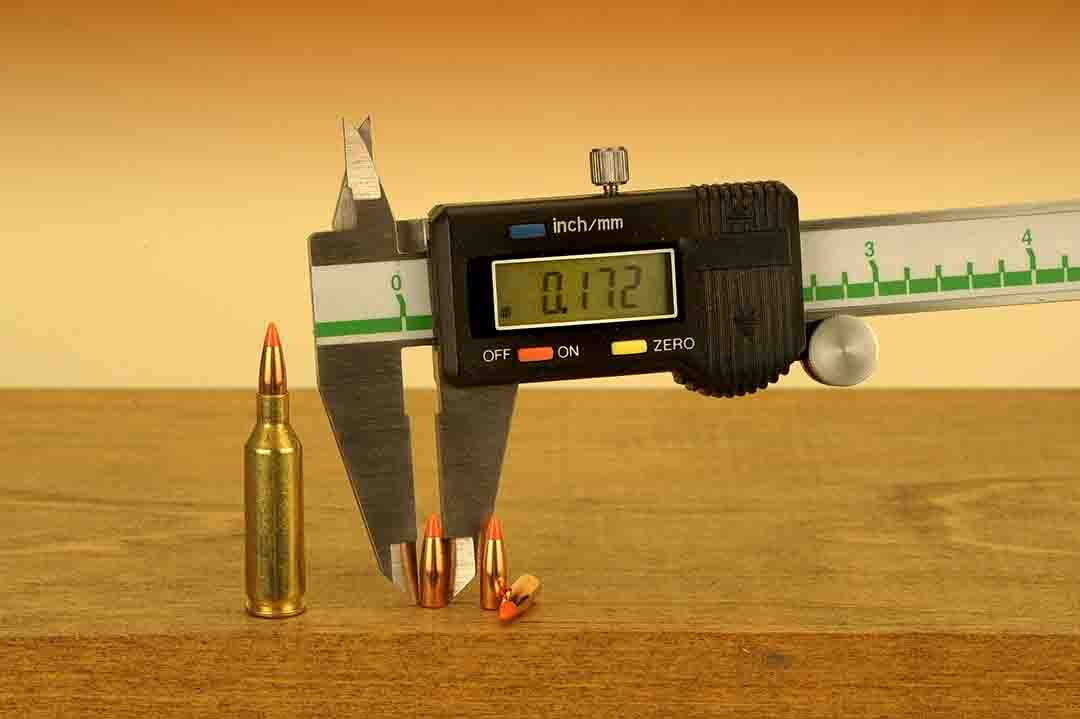
With a bullet diameter of .172 inch, some folks I know have a hard time inserting the bullet into the case for the final seating but it is easily overcome with a “C” press of larger interior dimensions. Regardless, the .17 caliber has come of age and is perfect for small game out to reasonable distances.
Regardless of the method used to gain cartridge cases for loading, after the initial sizing, they go to the range with me to customize the case to the rifles chamber, more commonly called fireforming. In doing this, I use the lowest powder charge stated in the manuals for the bullet I’m using and to do some “multitasking.” I can sight-in the scope at the same time. Granted, the shots will probably be low on the target, but it will get shots on the paper for further adjustments.
In years past, the .17 caliber was shortchanged a bit when it came to bullets. Nowadays, this caliber is coming into its own thanks in part to not only the original MACH version, but the way the .17 Remington has entered the market in both rifles and ammunition. Presently, and with a little research, 20- to 25-grain projectiles from Hornady, Nosler, Berger and in the past, Calhoon, with his 19-grain bullets, but according to that site, they are no more!
With a small case like the MACH IV, powders are used in smaller quantities so they last forever with a miniature cartridge like the .17 MACH IV. For example, one of my best loads containing 15.2 grains of H-4198 under a Hornady 25-grain bullet will yield around 460 loadings from a pound of propellant while providing a very respectable 3,300 feet per second (fps) with groups under an inch at 100 yards. Other powders that like this cartridge with better than average groups are IMR-4198, Vihtavuori N130 and the H-322. In any event, having a small volume, careful attention to the details within the final charge weight by trickling each case is essential. Hornady mentions this in its reloading manual (8th edition) as “one half grain variation in powder charge may make as much as 100 fps difference in muzzle velocity and dramatic increases in pressure as well” in the .17 MACH IV. Good advice there.
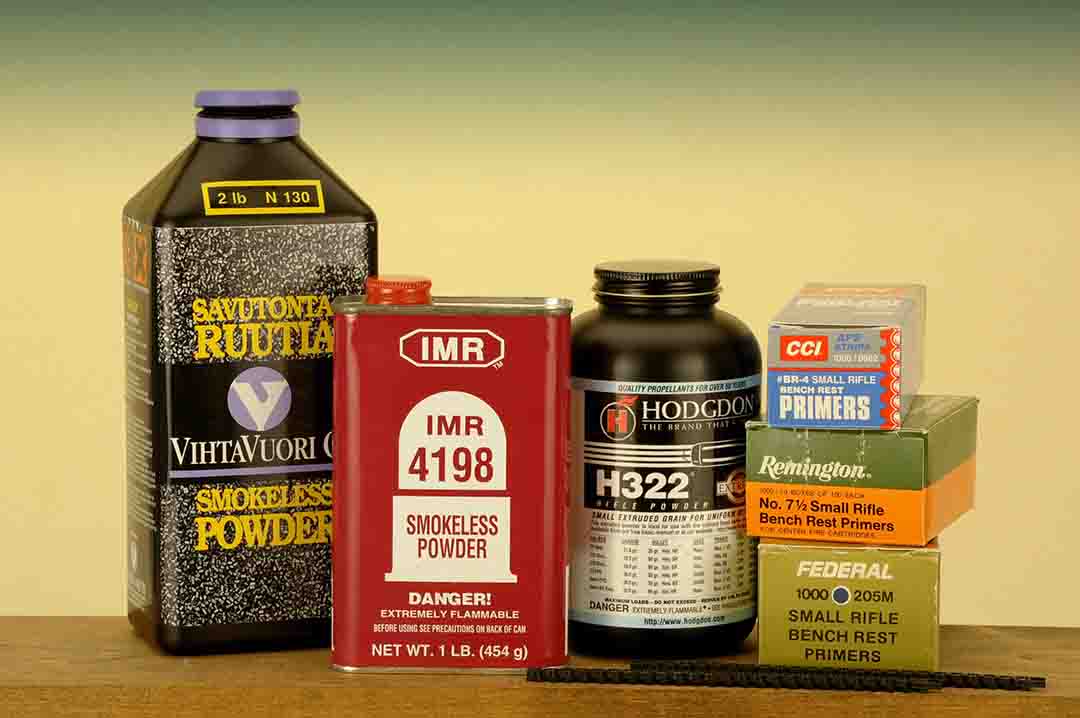
Thankful for all of us, the .17 MACH IV uses common, over the counter powders for reloading. Stan uses the “benchrest” type of primer for the best in accuracy.
It is interesting to note that the two cartridges in dimensional form are so minor that checking powder charges and load data shows, for the most part are interchangeable and within a half a grain or less. For example, using 14.2 grains of IMR-4198 in the MACH IV, I got 3,500 fps. In the .17 Remington Fireball, it takes us 14.7 grains to reach the same velocity. For the purist, slightly less economical, but on the other hand, with the availability of this round in over the counter factory rifles, I don’t think it will matter much to the dedicated varmint hunter/handloader in today’s world.
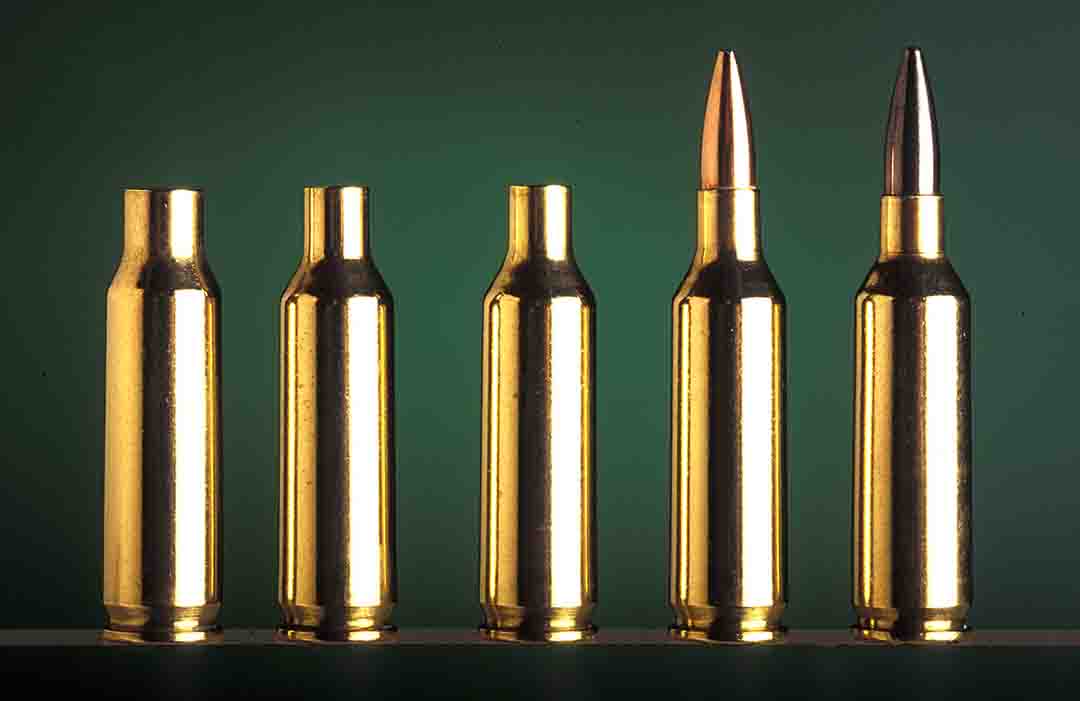
If you love handloading, you will like the challenge of the .17 MACH IV. From left to right, the .221 Fireball case is shown here after its trip through the form die, then the trim die and finally, with the bullet seated. The final case shows the result after fireforming in the Cooper rifle.
Okay, so how do both of these fine .17-caliber cartridges stack up between the two of them? Close, I’d say and I think a handloader would be at home with either one of them, depending of course on how much work, patience, availability of rifles and components or range time a handloader wants to spend with each. With the .17 MACH IV, using 18.5 grains of H-322 with a 25-grain Hornady V-MAX, I got velocity readings of 3,502 fps with mean .500 inch 3-shot groups at 100 yards. On the other hand, the .17 Remington Fireball loaded with 16 grains of H-4198 brought me up to 3,427 fps with .400-inch average groups.
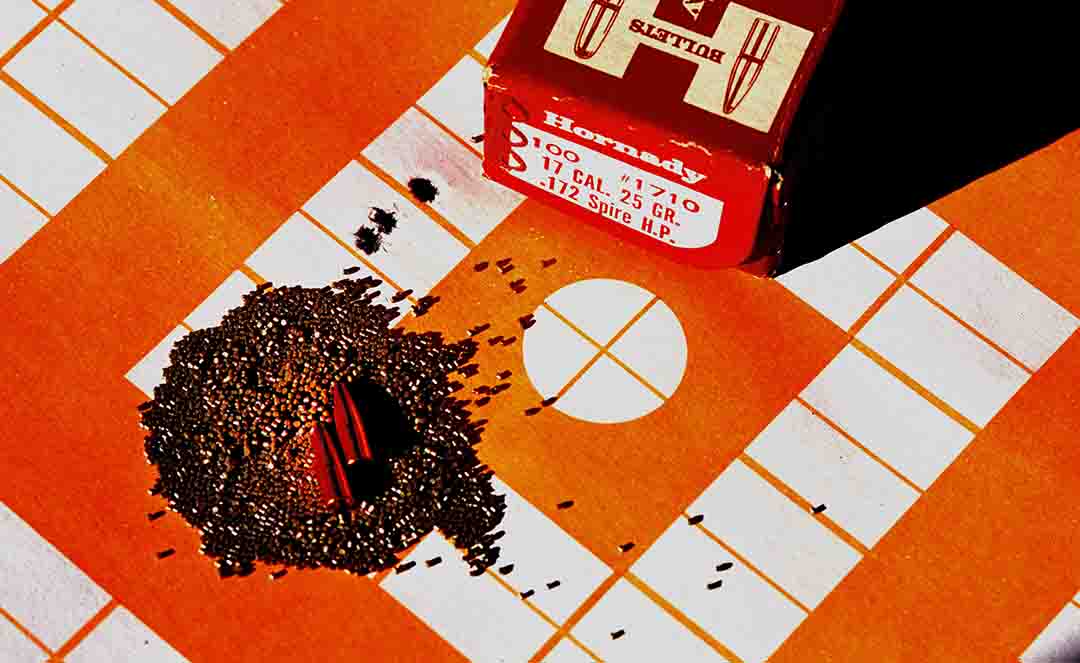
The .17 MACH IV cartridge is very accurate and becomes known when careful handloading is exercised at the bench. This curt half-inch group is the result of combining a Hornady 25-grain bullet over 18.5 grains of H-322 powder.
With almost 50 years between them, both have come a long way albeit in different directions. In the case of O’Brien, he had the know-how to bring his .17 caliber version to the light of day by squeezing the neck down on the .221 Fireball, but it died after Harrington and Richardson picked it up. From there, Cooper Arms had the insight to design some high-quality rifles in various forms to keep the torch going on the .17 MACH IV, some of which can still be purchased today on the secondary market but without the backing of a true, commercial company with a wide distribution base and reasonable prices. Remington on the other hand took the thunder out of the MACH IV custom rifle and its wildcat status, saw the light with the .17 caliber, brought out rifles and had the brass ready to tie it all together. Like Remington does best, they commercialized it and in view of the fact that I like the seventeen’s, I had their Custom Shop build me one on the Model Seven chassis.
In any event, both are close in every respect right up to the point of shooting those tiny groups downrange. I like them both.











